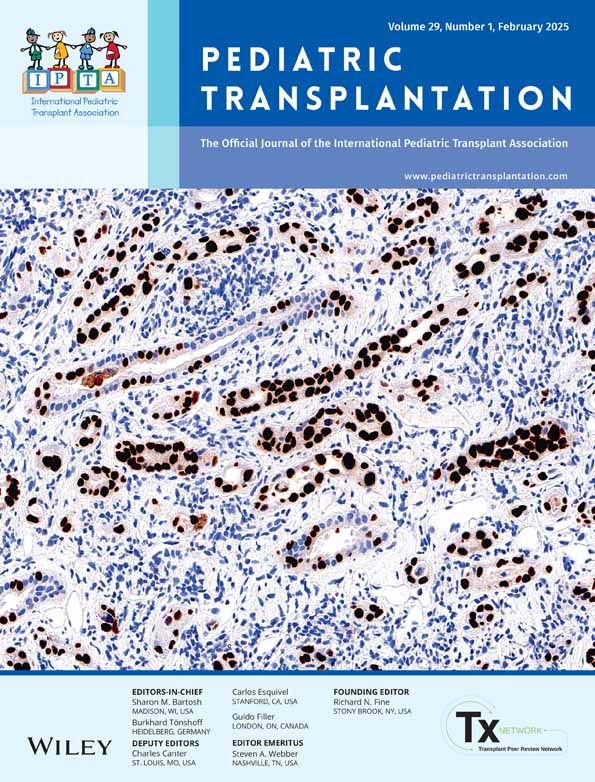Fate of Semilunar Valves From Discarded Hearts at the Time of Pediatric Heart Retransplantation
Funding: The authors received no specific funding for this work.
Submitted as an abstract to the 45th International Society of Heart and Lung Transplantation annual meeting.
ABSTRACT
Background
Partial heart transplantation (PHT) is a novel procedure for children in need of a growing valve replacement option. One challenge is identifying suitable donor valves. Semilunar heart valves from patients receiving a retransplant may be a source, however their functionality and growth potential especially at the time of retransplant are unknown. We aimed to assess growth and function of these valves.
Methods
Data from patients undergoing a retransplant at a single institution were analyzed. Echocardiograms were compared following the primary transplant and immediately before retransplant to assess growth and valve function.
Results
Thirteen patients were included. Recipient and donor ages at the primary transplant were median (range): 2 years (0–13) and 3 years (0–40), respectively. The median time to retransplant was 11 years (2–21). There was an overall growth across all semilunar valve measurements; aortic valve annulus diameter (mean increase ± standard deviation): 0.2 ± 0.12 cm, aortic root: 0.29 ± 0.16 cm, and pulmonary valve annulus: 0.5 ± 0.34 cm; all p < 0.05. The growth rate of valves was higher in younger patients and showed a better correlation with graft age relative to recipient age: aortic valve annulus growth R2: 0.61 (graft age) versus 0.54 (recipient age); aortic root R2: 0.73 versus 0.57; pulmonary valve annulus R2: 0.94 versus 0.86. No patients had clinically significant regurgitation or stenosis on the latest echocardiogram. All except one patient's measurement had valve Z-scores within ±2 at retransplant.
Conclusion
Explanted hearts from patients undergoing retransplantation could be considered an additional source of semilunar valves for PHT. Valves from these hearts were found to function normally and grew in proportion with the recipient's body. Valves from younger donors/recipients demonstrated a more rapid growth rate.
Open Research
Data Availability Statement
The data that support the findings of this study are available from the corresponding author upon reasonable request.




